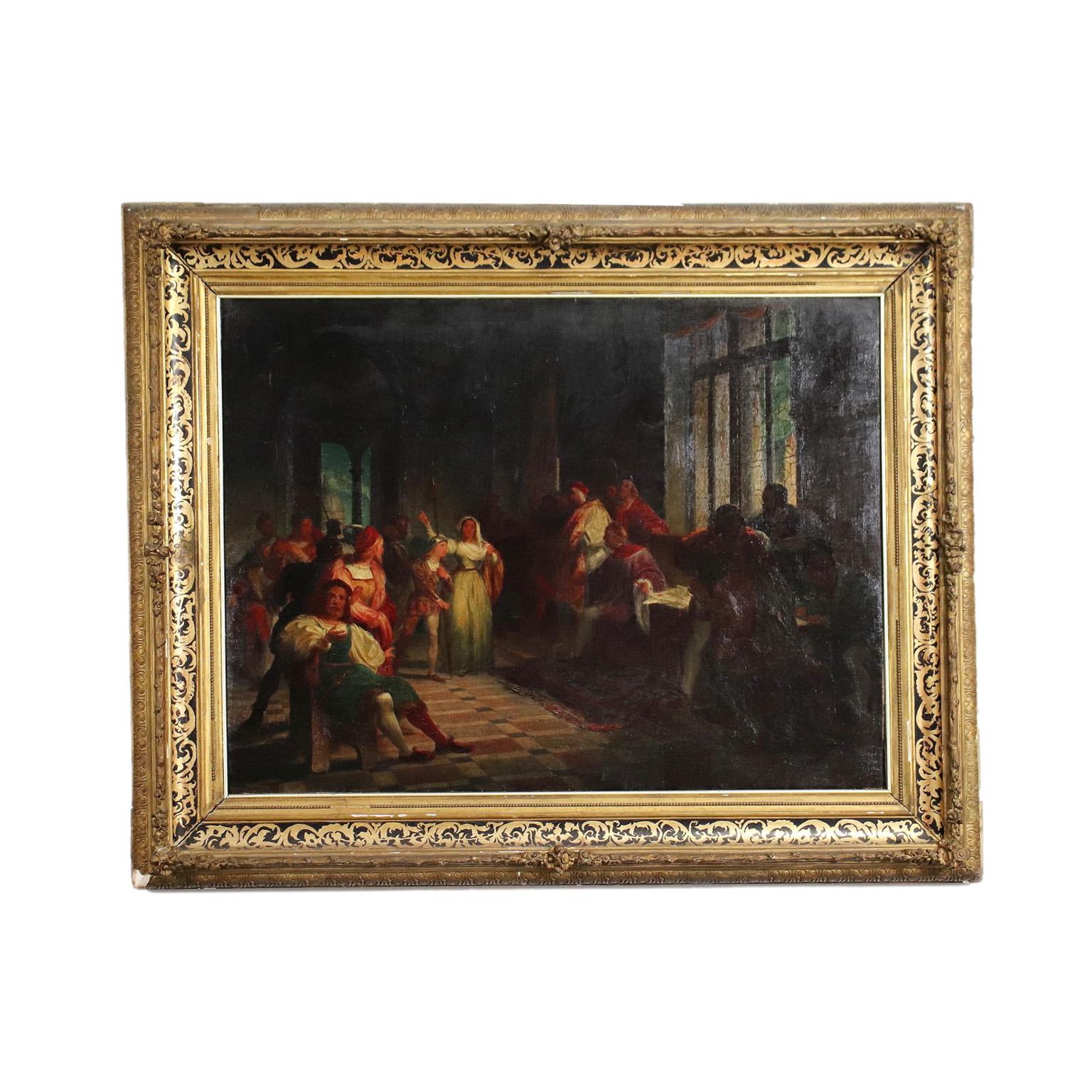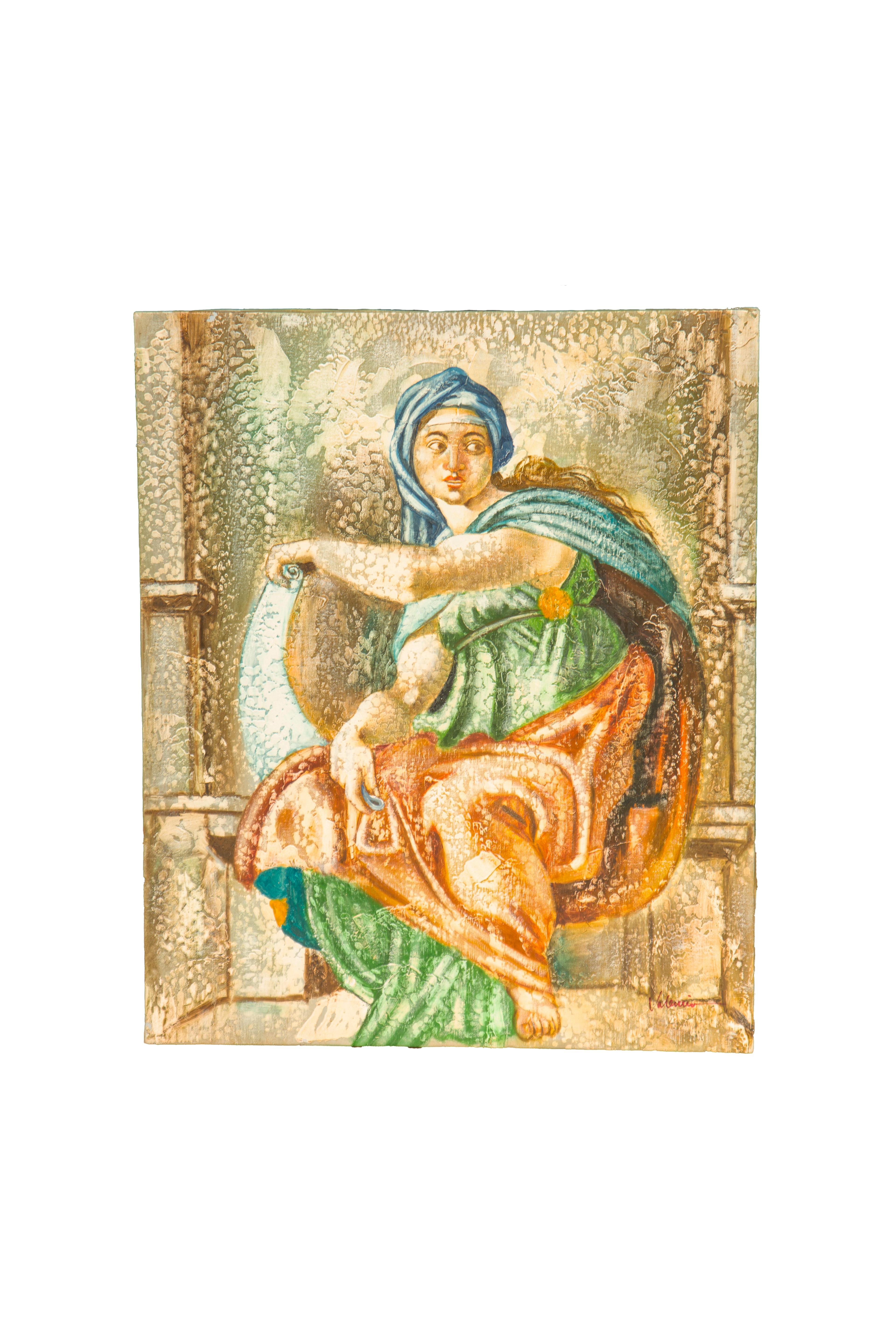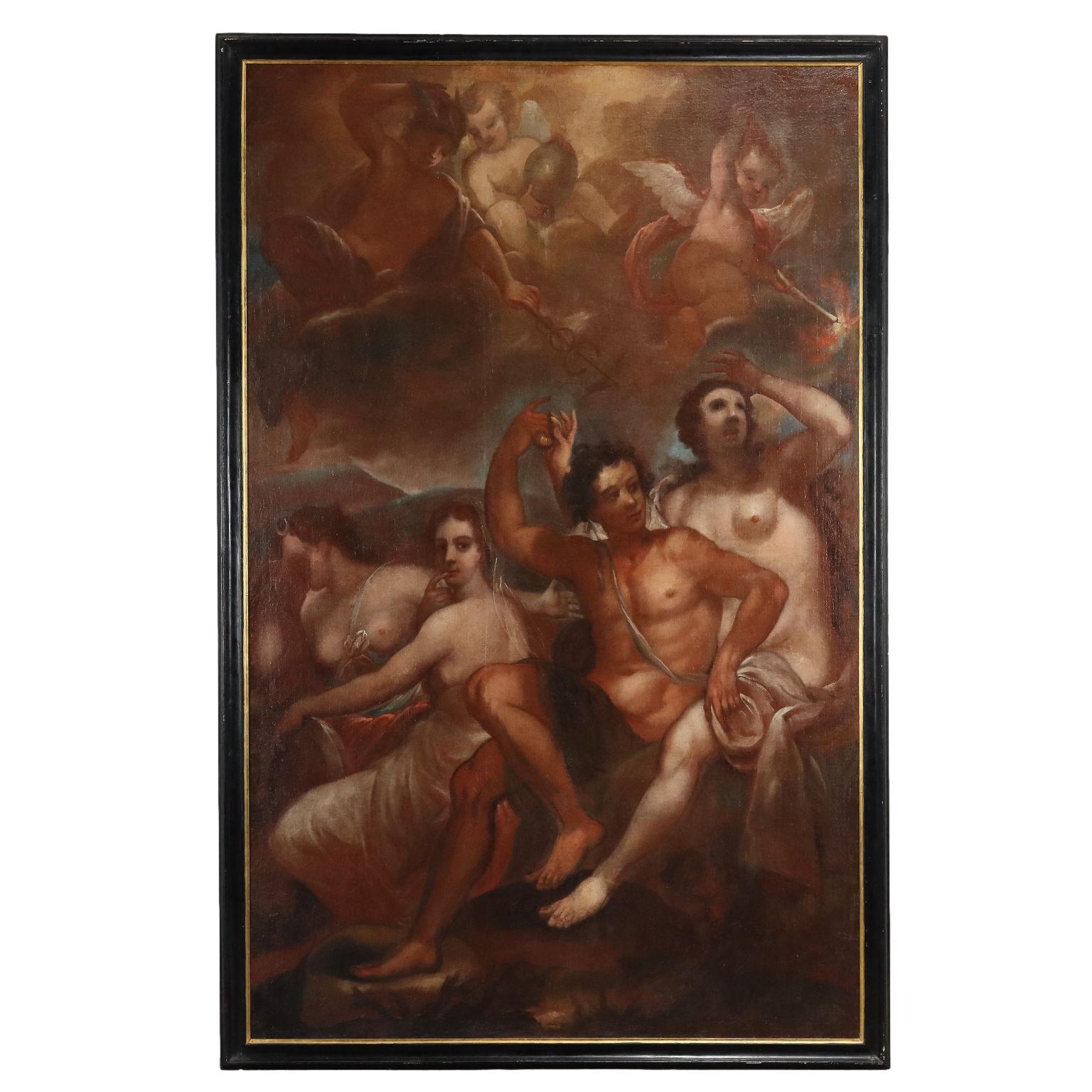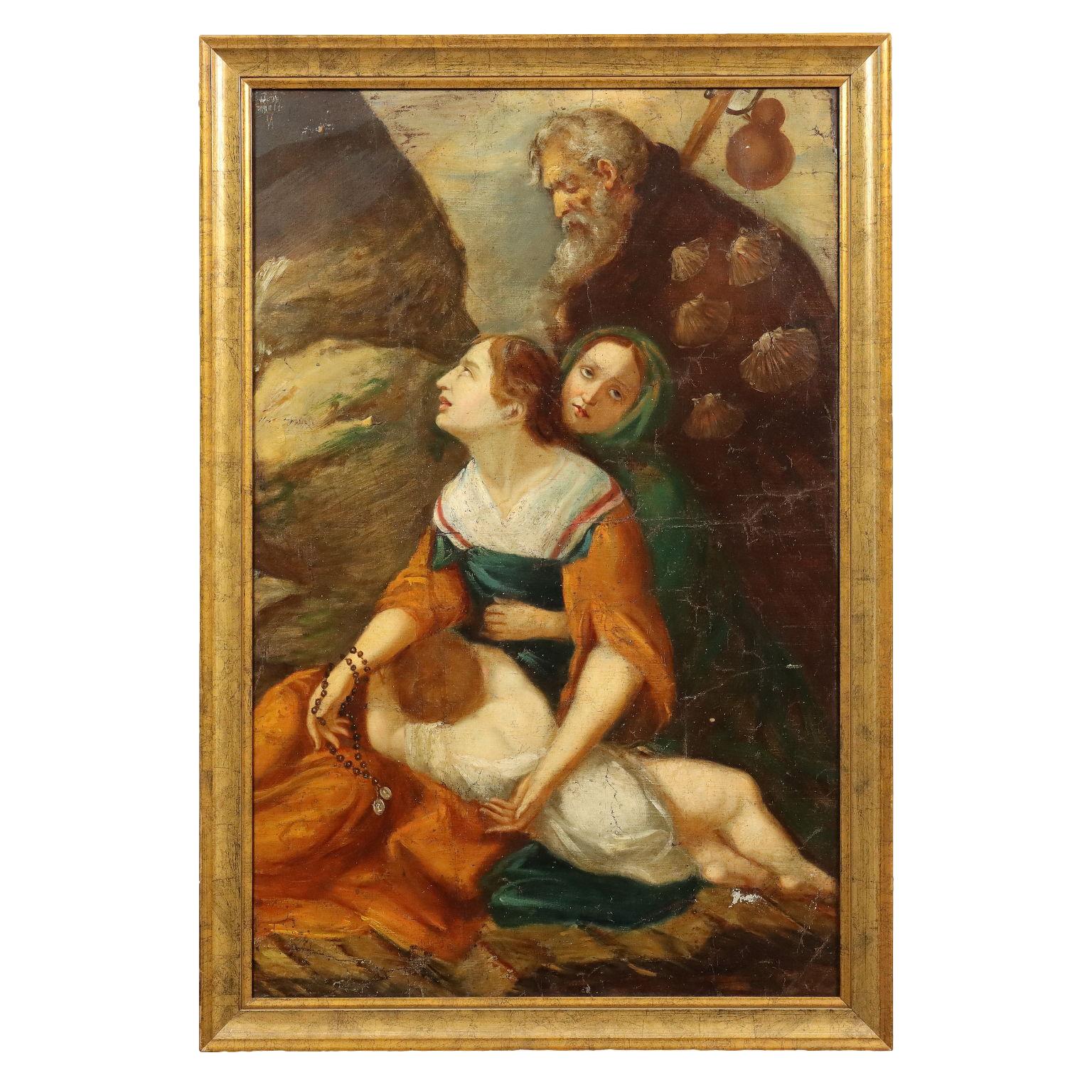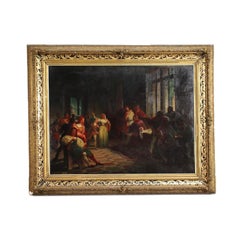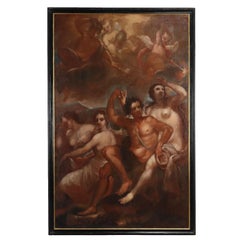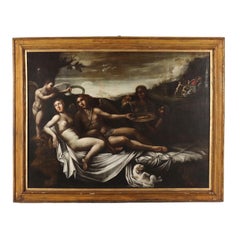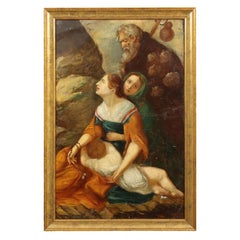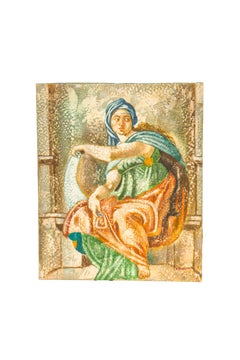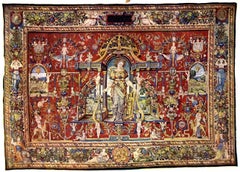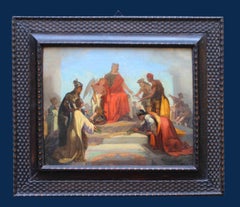Items Similar to Great Grass Juice 19th Century, The Nine Muses
Want more images or videos?
Request additional images or videos from the seller
1 of 17
UnknownGreat Grass Juice 19th Century, The Nine Muses1800s
1800s
$5,846.23
£4,401.31
€4,950
CA$8,053.56
A$9,019.48
CHF 4,706.22
MX$110,169.10
NOK 59,876.79
SEK 56,441.05
DKK 37,680.07
About the Item
Grass juice. The word Euterp appears in the lower right corner.
The huge grass juice depicts the nine Muses, Greek female deities, all sisters, as daughters of Zeus and Mnemosyne, and having as their guide the god Apollo. They represented the supreme ideal of Art, understood as the truth of the "All" or the "eternal magnificence of the divine."
Initially loosely regarded as gods of song and juggling dances, deputed to set to music and verse stories such as the origin of the world, the birth of gods and men, and the exploits of Zeus, and depicted often accompanied by various musical instruments, from the Hellenistic era onward all singing and musical expressions including sad and funeral ones, and other arts such as theater were associated with them, and each of them was associated with a specific genre of art, so that they could be individually invoked to exercise their inspiration and protection.
The word "Euterp" refers to the name of one of them, precisely Euterpe, muse of lyric poetry and music, traditionally depicted with a flute; but the name Euterpe etymologically means "She who rejoices" who brings joy, and one can think therefore of the choice of such a name to holder the tapestry want to defer to the oldest function of the Muses, those of bringing joy through art.
In this presentation, the muses appear as they dance, decked out in veils and flowering vines; in their hands or laid beside them appear tools or other objects symbolic of the art they inspire (theatrical masks both tragic and comic, the pictorial palette, various musical instruments...).
THE large painting shows signs of wear and moisture stains.
- Creation Year:1800s
- Dimensions:Height: 75.6 in (192 cm)Width: 248.04 in (630 cm)Depth: 0.2 in (5 mm)
- Medium:
- Period:
- Condition:
- Gallery Location:Milan, IT
- Reference Number:1stDibs: LU680314306482
About the Seller
4.8
Gold Seller
Premium sellers maintaining a 4.3+ rating and 24-hour response times
Established in 2017
1stDibs seller since 2017
125 sales on 1stDibs
Typical response time: 4 hours
- ShippingRetrieving quote...Shipping from: Milan, Italy
- Return Policy
Authenticity Guarantee
In the unlikely event there’s an issue with an item’s authenticity, contact us within 1 year for a full refund. DetailsMoney-Back Guarantee
If your item is not as described, is damaged in transit, or does not arrive, contact us within 7 days for a full refund. Details24-Hour Cancellation
You have a 24-hour grace period in which to reconsider your purchase, with no questions asked.Vetted Professional Sellers
Our world-class sellers must adhere to strict standards for service and quality, maintaining the integrity of our listings.Price-Match Guarantee
If you find that a seller listed the same item for a lower price elsewhere, we’ll match it.Trusted Global Delivery
Our best-in-class carrier network provides specialized shipping options worldwide, including custom delivery.More From This Seller
View AllHistorical subject, XIXth century
Located in Milan, IT
Oil painting on canvas. Mid 19th century. The large scene tells an unidentified historical episode, set in the Renaissance period, in which an archbishop listens to the plea of a you...
Category
19th Century Other Art Style Figurative Paintings
Materials
Oil
Painting The Judgement of Paris 18th century
Located in Milan, IT
Oil on Canvas.
The large painting depicts the famous mythological episode of the Judgement of Paris, the event that helped trigger the Trojan War.
Paris, a Trojan prince, was called ...
Category
18th Century Other Art Style Figurative Paintings
Materials
Oil
Painting with Mythological Scene Love and Psyche 18th century
Located in Milan, IT
Oil on Canvas. School north -Italy 17th century.
The scene is based, with some variations but very close in size, on a part of the large fresco entitled "Banquet of the Gods" in th...
Category
18th Century and Earlier Other Art Style Figurative Paintings
Materials
Oil
Painting Figures in Prayer 19th century
Located in Milan, IT
Oil on Canvas.
The scene, outdoors at the foot of a slope, shows two female figures slumped and behind them a pilgrim, with the traditional staff and shells on his cloak.
The woman ...
Category
19th Century Other Art Style Figurative Paintings
Materials
Oil
Confidences 19th century
Located in Milan, IT
Watercolor on paper. Artist's monogram in upper left corner.
Tranquillo Cremona, after an initial period close to Romantic painting, from 1870 onward moved away from the influences ...
Category
19th Century Other Art Style Figurative Paintings
Materials
Watercolor
Christian Orthodox icon on panel (Ethiopia) First Half of 20th Century
Located in Milan, IT
Framed wooden icon with a depiction of a winged devil in chains in the center. This could be Lucifer, the rebel angel who fell from Heaven and became the prince of all demons and was...
Category
Mid-20th Century Other Art Style More Art
Materials
Oil
You May Also Like
Michelangelo’s Sistine Chapel Character
Located in Jacksonville, FL
A delightful depiction of one of Michelangelo’s Sistine Chapel characters. Acrylic on canvas
Adds a nice touch to any interior decor.
Size 24x20
27655-LU2595214704342
Category
21st Century and Contemporary Paintings
Materials
Acrylic
Large Italian Mythological Grisaille Painting Tritons and Nereids 18th century
Located in Pistoia, IT
Large and beautiful Italian grisaille painting with a mythological theme in Renaissance taste, second half of the 18th century. The painting is unsigned.
Painted in oil on canvas, to...
Category
Late 18th Century Renaissance Figurative Paintings
Materials
Canvas, Oil
Serigrafia italiana del XX secolo rappresentante allegoria dell'estate
Located in Florence, IT
Questo splendido esempio di tecnica mista e serigrafia dei primi del Novecento è ispirato dalla serie manierista "Mesi e grottesche" realizzata a Bruxelles da Michel Coxcie (1499-15...
Category
Early 20th Century Other Art Style Mixed Media
Materials
Canvas, Silk, Paint
Attributed to Hannibal Gatti, Allegorical Scene
By Annibale Gatti
Located in Milan, IT
Annibale Gatti (Forlì 1827 - Florence 1909), attr.
Allegorical Scene
Oil on paper applied to board, 25 x 30 cm - with frame 36 x 42
The allegorical work, by analysis and stylistic...
Category
19th Century Other Art Style Figurative Paintings
Materials
Paper, Oil
Very Large, 16th Century Allegorical Oil Painting
Located in Los Angeles, CA
Beyond life-sized, allegorical, Renaissance figural oil painting of Summer, featuring a nymph recessed in an alcove, swathed in drapery, wearing a foliate crown. In her right hand, a...
Category
16th Century Renaissance Paintings
Materials
Oil, Canvas
18th to 19th Century "Art Presentation" Old Master Drawing
Located in San Francisco, CA
18th to 19th Century "Art Presentation" Old Master Drawing
Remarkable old master pen, ink and wash drawing of an art presentation
Dimensions 14" wide x 8.5" high
The lightly distr...
Category
Early 19th Century Figurative Drawings and Watercolors
Materials
Ink, Watercolor
More Ways To Browse
Hawksbill Turtle
Je Te Mangerais Dans La Main
Johanan Vitta
Kaws Five Years Later
Kelsey Murphy
Kipp Stagg
Kondo Yutaka
Kraftwerk Poster
Leon Israel Lola
Lina Viktor
Lorenzo Scott
Meriden Cutlery
Needlepoint Backgammon
Nicole Schaap
Nova Totius Terrarum Orbis Geographica Ac Hydrographica Tabula
Nova Totius Terrarum Orbis Tabula
Nun Smoking
Okura Porcelain
